Notes
AP Photographer Alters Syria Photo to Remove … a Camera! — Worth Considering a Little Deeper
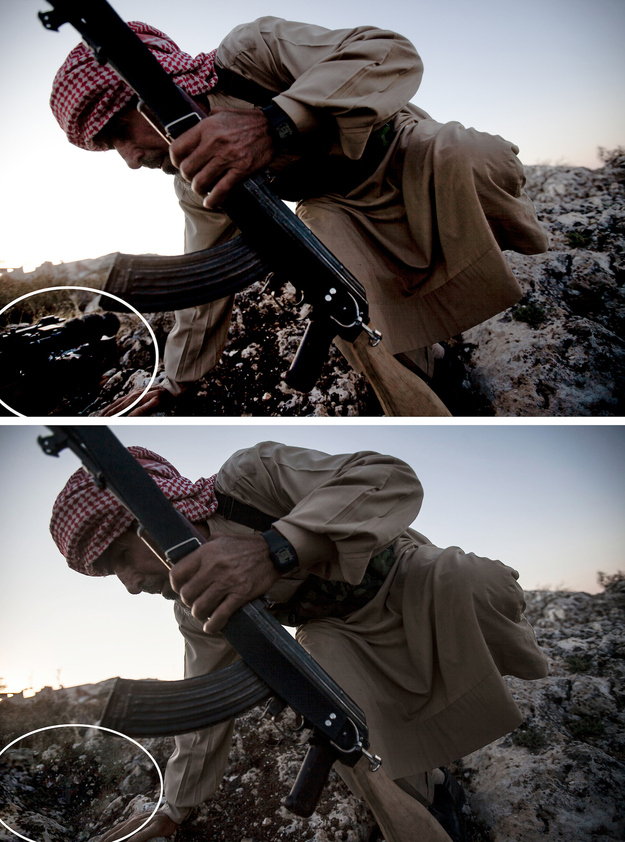
If you follow the business of news photography, you surely already heard that AP banished freelancer Narciso Contreras for altering a photo taken in Syria last September 29th. Above is the diptych the media company released juxtaposing the original photo with the altered one. The caption reads:
In a photo taken, Sunday, Sept. 29, 2013, a Syrian opposition fighter takes cover during an exchange of fire with government forces in Telata village, a frontline located at the top of a mountain in the Idlib province countryside of Syria. In the original image (top photo), a fellow journalist’s video camera is visible on the ground in the left corner of the frame. Narciso Contreras / AP
If we start with the “housekeeping” end of things, I’m always wondering what happens to the published images after the photographer pays such a dear price and the wire service, understandably, makes such a public condemnation.

Do sites like The Japan Times…
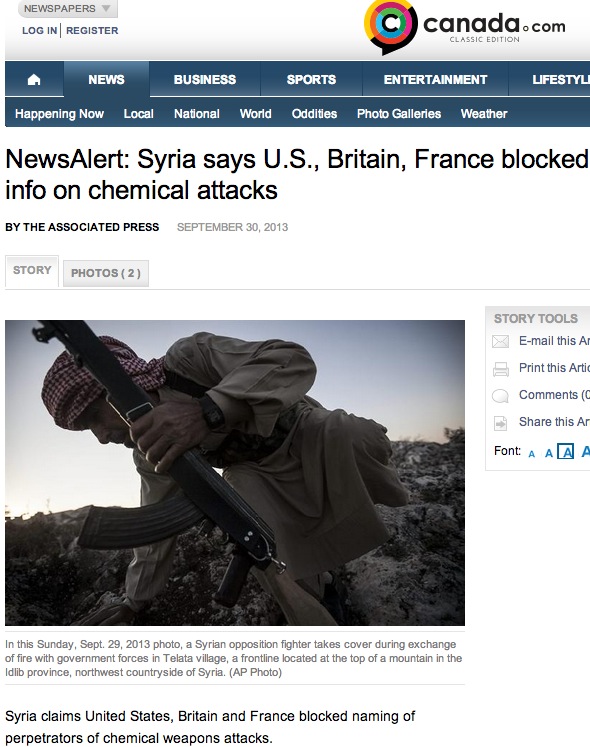
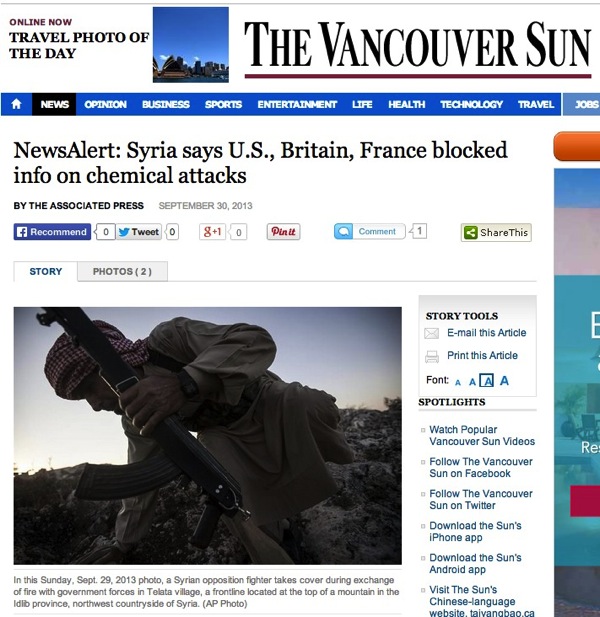
or the Vancouver Sun always follow suit and take these photos down, or are readers left with a mental picture of a crevice that wasn’t there?
And then, does someone know something that the rest of us don’t? Such as, whether a cropped version of the photo was also offered for sale? Looking back from now, this cropped version we see below on the MSN site and the other from Yahoo — cutting off the photo just below the gun butt — now seems almost clairvoyant.
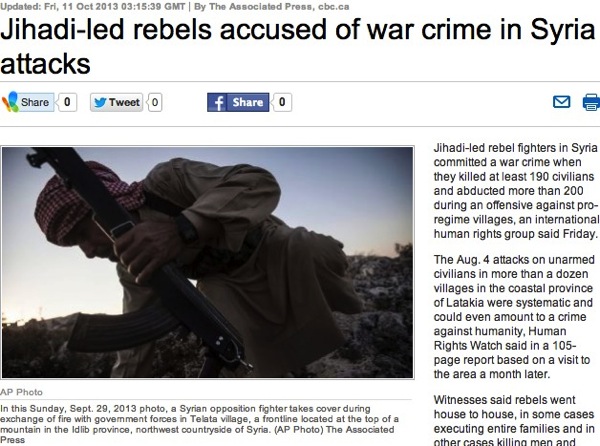
Here’s what really strikes me though….
Beyond the transgression, isn’t it ironic Contreras was done in by a camera? Not by a bottle of beer. Not by a backpack. But, a camera. I say ironic because the viewer, particularly in war photography, isn’t supposed to be aware that there is a camera. It’s as if the tacit agreement between photographer, editor, publisher and consumer is to always pretend that there is no intermediary but, instead, it’s simply you or I standing there with our own eyes.
But maybe the transgression is more practical than ironic. I imagine Contreras, who authored almost 500 photos for AP since 2012; who was part of an AP team last year that had won a Pulitzer for Syria coverage; and who claimed, earnestly it sounded like, that he had never done such a thing before, was only too aware of the presence of the camera. Not just because the presence of the device killed the primitivism and mystique, but also the illusion that the reader is the witness and these photos aren’t photos, but windows.
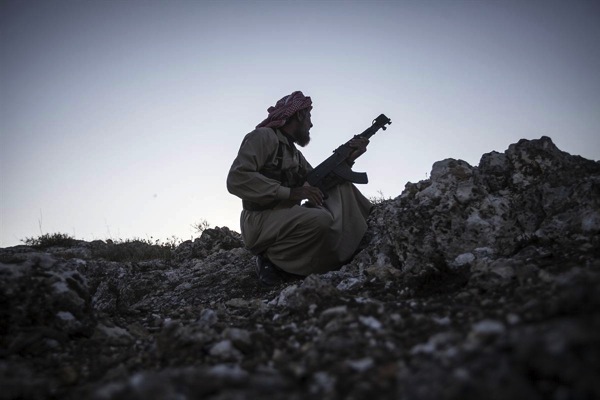
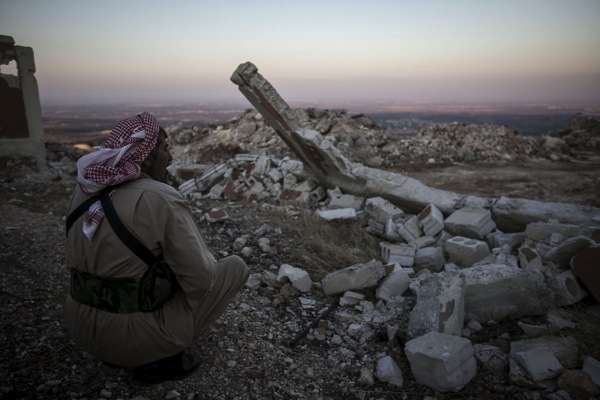
Talking about that mystique, by the way, these are Contreras’s shots of the same guy from a couple other angles — as if there was nobody else around for miles.
UPDATE:
Reading Ben Chesterton’s post about the banning of Contreras this morning, it seems there are a lot more politics to this story.
Beyond the issue of what to do about Contreras’s Pulitzer and AP writing a story about themselves as an act of damage control, Ben, and others on Twitter this morning, question whether the “crime” of altering a photo is really so black-and-white. Highlighting Contreras’s distinguished work for AP, and both Chesterton and Jeremy Nicholl (@Russian_Photos) bring up the issue of intent. In other words, is it meaningful to consider — especially, punishment-wise — the difference between altering the fundamental editorial meaning as opposed to removing a peripheral, and obviously dissonant detail. That’s what I’m addressing above in terms of the particular impact of a video camera in the context of a war scene/a portrait/such a primitive setting.
What expands the discussion, at least a little more, is the extent to which news photography is becoming more “artsy.” These photos (particularly looking at the larger grouping) are not documenting a specific battle or an act with high informational value as much as they are more atmospheric, even nostalgic. I can’t say — especially if you read this site on a regular basis — that I’m at all comfortable with this trend. On the other hand, however, if the newswires are blurring the line between visual facts and romanticism/atmosphere, shouldn’t this trend also inform the consideration of Contreras’s action as well as the larger debate? After all, it makes sense to me that the removal of the camera might have been inspired by the motivation to feed AP what’s in increasing demand these days, which is: more poetry.
Another issue here involves the logic of removing all of Contreras’s photos from the AP site — as opposed to just the one offending picture. What is the rationale there except a punitive one to shame the photographer. In removing all the photos, it seems that it’s we, the public, that are being punished, as is the cause of truth when these images Contreras and others risked their lives to create are no longer available, now, as (potentially significant) file photos, to be further seen, compared and contextualized.
…As a companion issue, I’m also thinking about the fate of the cropped version that Yahoo and MSN used. Because I found it on several large news sites, I imagine that AP also circulated the variant that doesn’t show the lower left of the original at all. If AP did decide to ban just the one photo (and the crop wasn’t made by the news outlet), it seems that the cropped version would retain legitimacy, no?
And then, I’m not just being flip in pointing out that the published version of the photo — on the ever-current news web — is still out there while Contreras is confined to purgatory. If the infraction here is so egregious that Contreras is being banned, and not just the offending photo, but all his photos on the AP site are being expunged, does it make any sense to leave these photos up on the AP client web sites as if the horses are already out of the barn? But then, I’m not familiar with newswire practices in such instances so perhaps AP is already in the process of contacting all the outlets that published the photo and insuring that it is being removed.
(photos: Narciso Contreras/AP. caption/last image: In this Sunday, Sept. 29, 2013 photo, a Syrian opposition fighter sits in Telata village, a frontline located at the top of a mountain in the Idlib, northwest province countryside of Syria.)
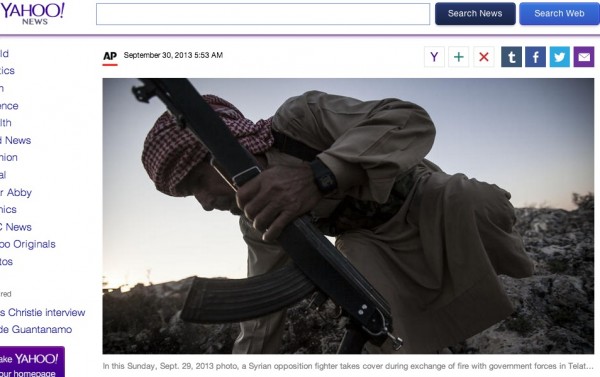
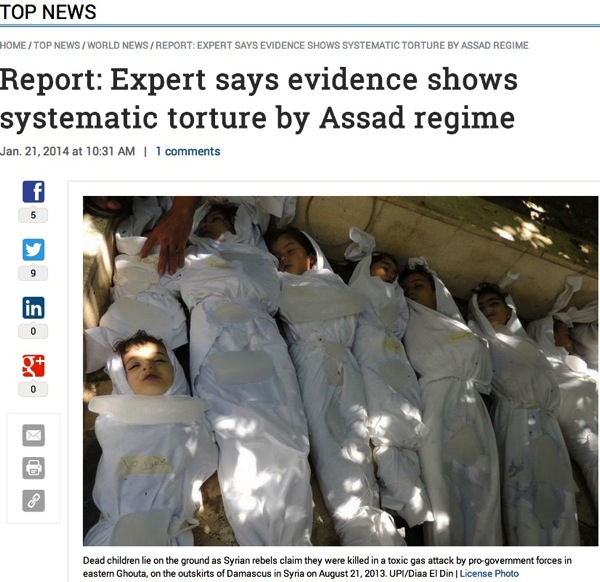

Reactions
Comments Powered by Disqus